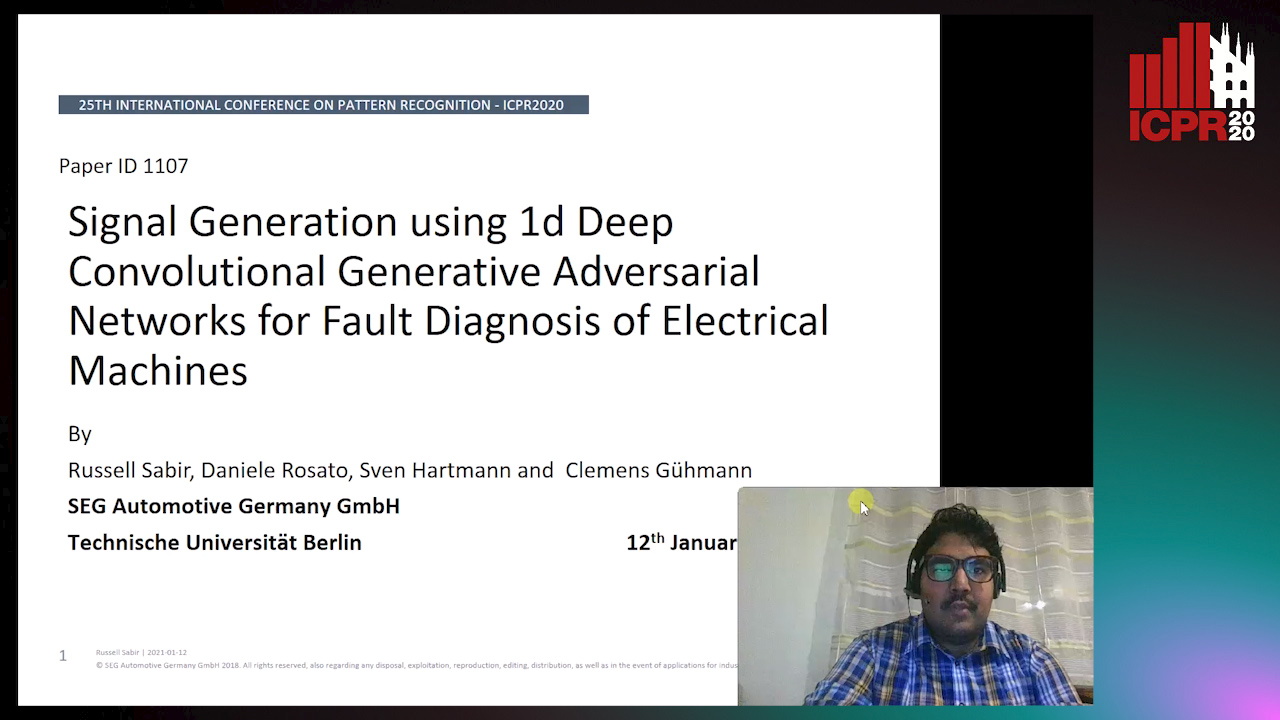Clemens Gühmann
Paper download is intended for registered attendees only, and is
subjected to the IEEE Copyright Policy. Any other use is strongly forbidden.
Papers from this author
Signal Generation Using 1d Deep Convolutional Generative Adversarial Networks for Fault Diagnosis of Electrical Machines
Russell Sabir, Daniele Rosato, Sven Hartmann, Clemens Gühmann

Auto-TLDR; Large Dataset Generation from Faulty AC Machines using Deep Convolutional GAN
Abstract Slides Poster Similar
AC machines may be subjected to different electrical or mechanical faults during their operation. Fault patterns can be detected in the DC current from the machine’s E-Drive system with the help of Deep or Machine Learning algorithms. However, Deep or Machine Learning algorithms require large amounts of dataset for training and without the availability of a large dataset the algorithms fail to generalize or give their optimal performance. Collecting large amounts of data from faulty machine can be a tedious task. It is expensive and not always possible. In some cases, the machine is completely damaged even before sufficient amount of data can be collected. Also, data collection from defected machine may cause permanent damage to the connected system. Therefore, in this paper the problem of small dataset is tackled by presenting a methodology for large dataset generation by using the well-known generative model, Generative Adversarial Networks (GAN). As an example, the stator open circuit fault in a synchronous machine is considered. DC currents from the machine’s E-Drive system are measured from different healthy and faulty machines and are used for training of two 1d DCGANs (Deep Convolutional GANs), one for the healthy and the other for the current signal from the faulty machine. Conventional GANs are difficult to train, however in this paper, training parameters of 1d DCGAN are tuned which results an improved training process. The performance of generator during the training of 1d DCGAN is evaluated by using the Fréchet Inception Distance (FID) metric. The proposed 1d DCGAN model is said to converge when FID score between the real and generated signal reaches below a certain threshold. The generated signals from the trained 1d DCGAN are further evaluated using the PDF (Probability Density Function), frequency domain analysis and other measures which check for duplication of the real data and their statistical diversity. The trained 1d DCGAN is able to generate DC current signals for building large datasets for the training of Deep or Machine learning models.